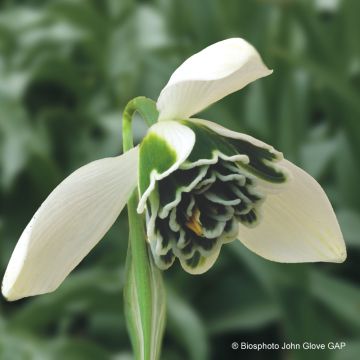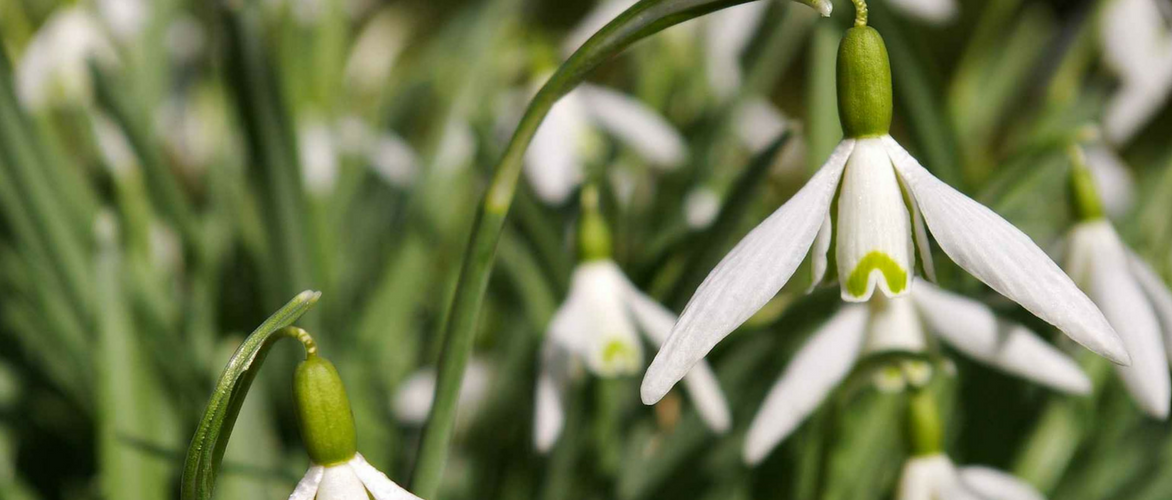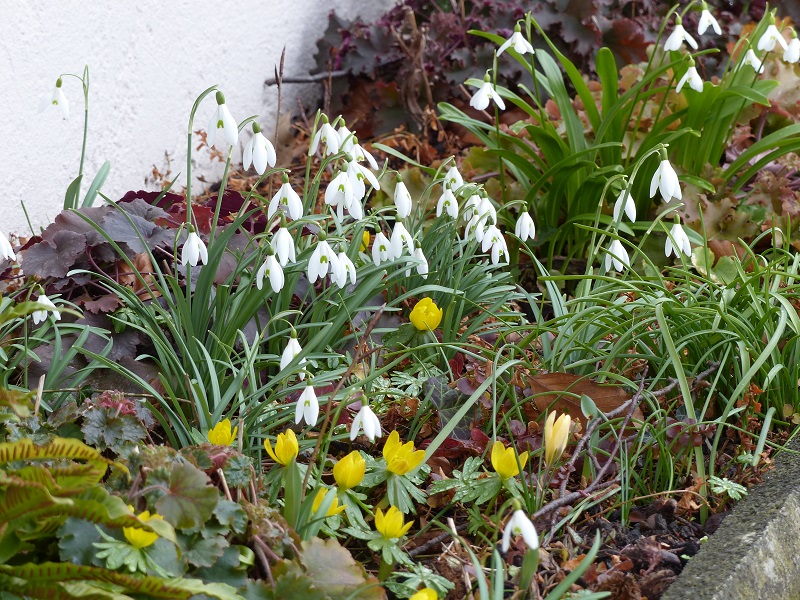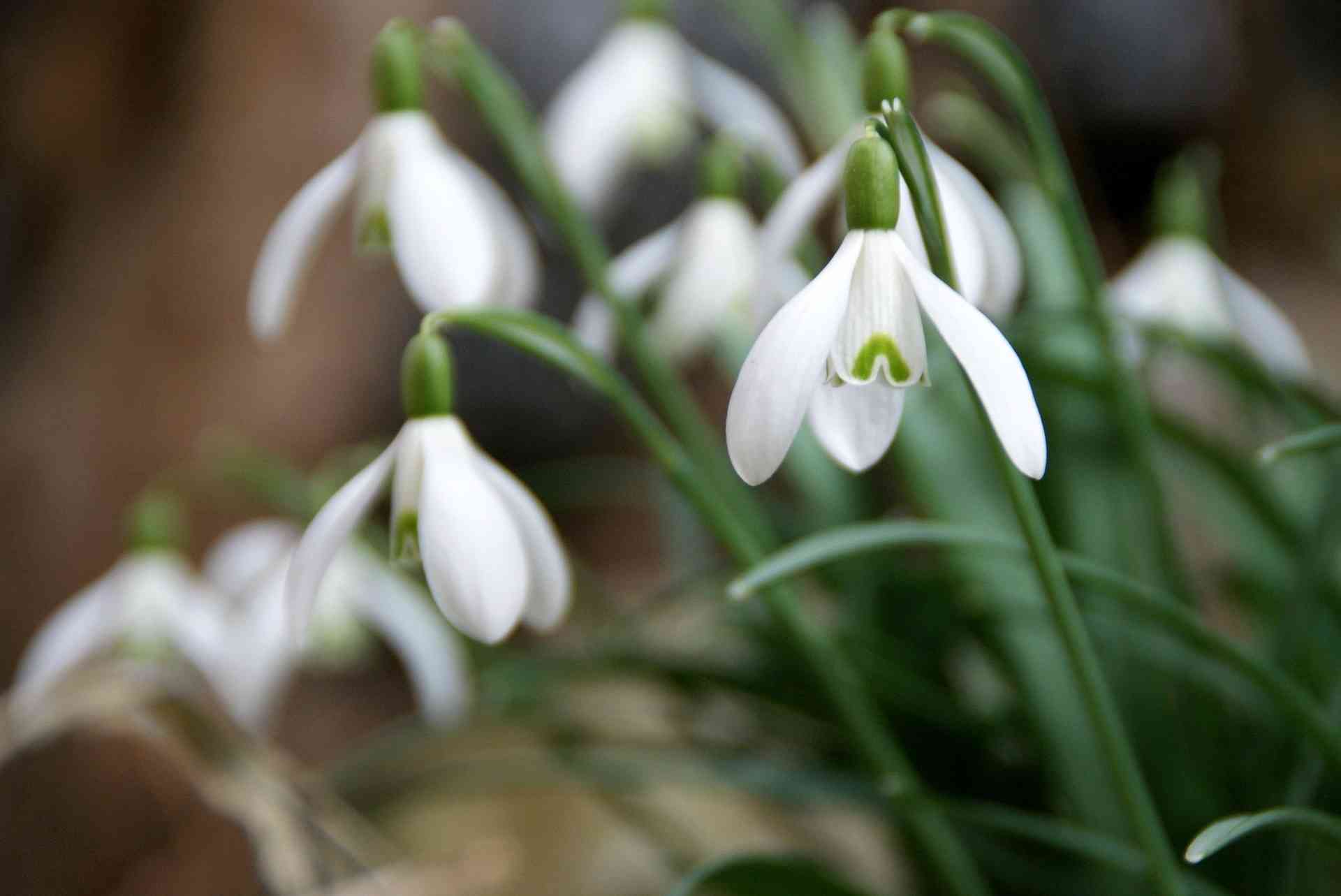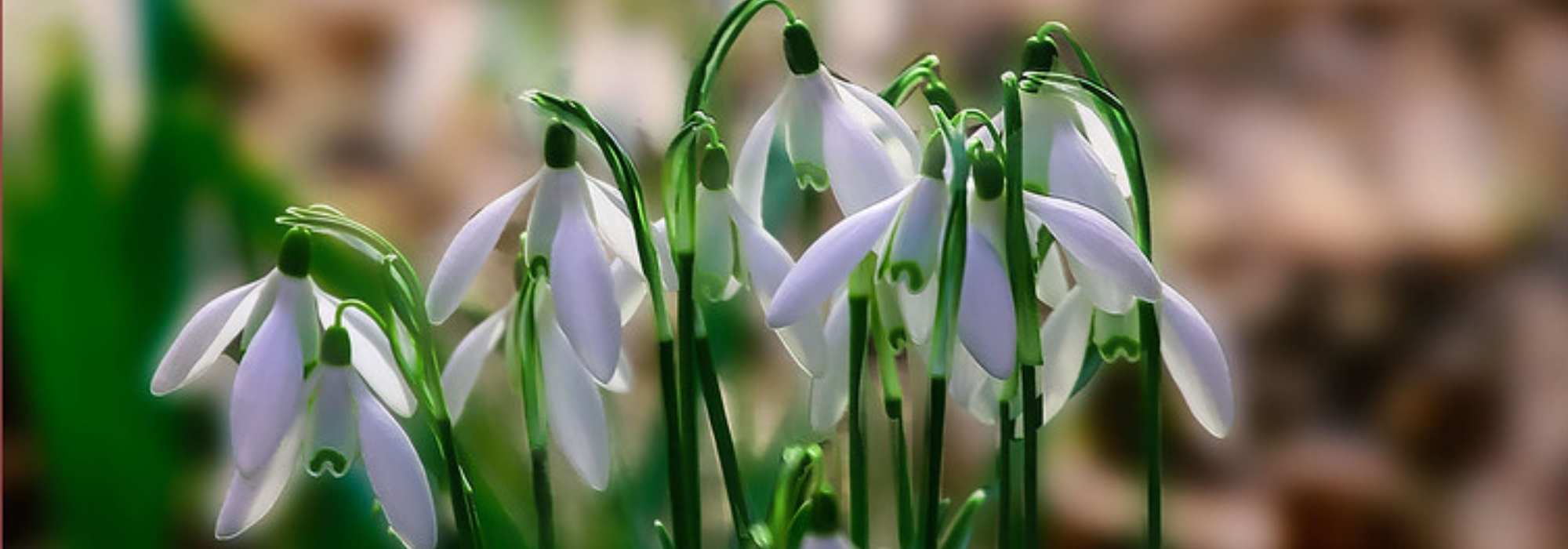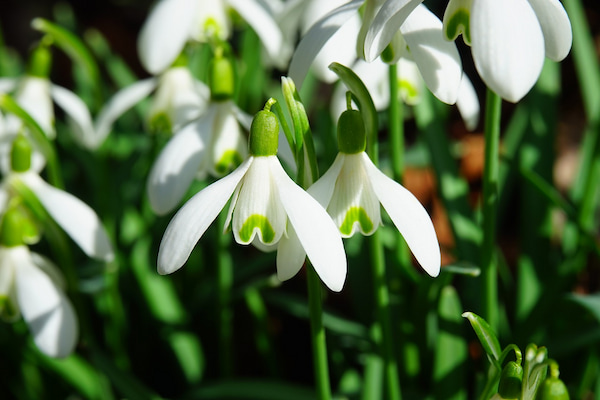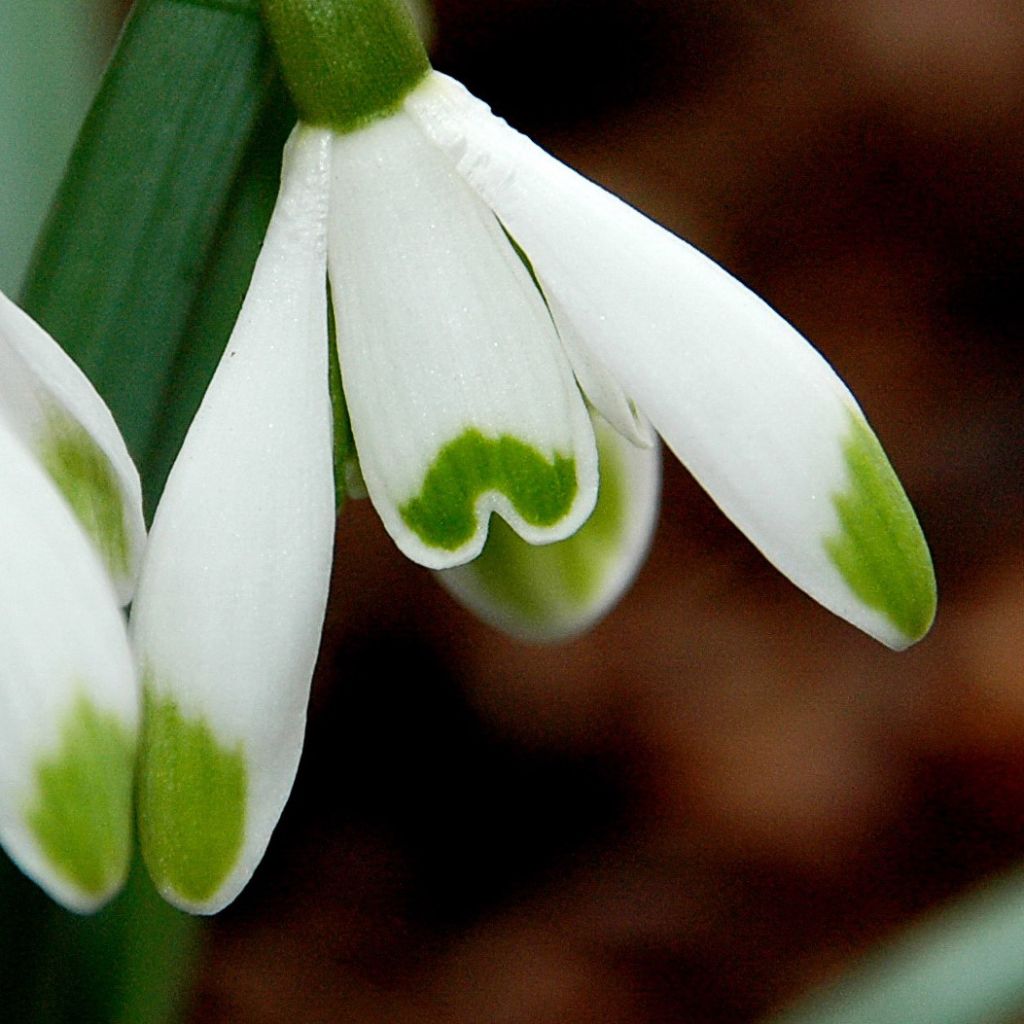

Perce-neige - Galanthus nivalis Viridi-Apice
Galanthus nivalis Viridapice
Galanthus nivalis Viridi-Apice
Snowdrop 'Viridapice'
Parcel in line with the request. Young plants arrived in great condition. Excellent tracking. Thank you.
Eric P., 11/09/2018
Special offer!
Receive a €20 voucher for any order over €90 (excluding delivery costs, credit notes, and plastic-free options)!
1- Add your favorite plants to your cart.
2- Once you have reached €90, confirm your order (you can even choose the delivery date!).
3- As soon as your order is shipped, you will receive an email containing your voucher code, valid for 3 months (90 days).
Your voucher is unique and can only be used once, for any order with a minimum value of €20, excluding delivery costs.
Can be combined with other current offers, non-divisible and non-refundable.
Why not try an alternative variety in stock?
View all →This plant carries a 6 months recovery warranty
More information
We guarantee the quality of our plants for a full growing cycle, and will replace at our expense any plant that fails to recover under normal climatic and planting conditions.

Does this plant fit my garden?
Set up your Plantfit profile →
Description
Galanthus nivalis 'Viridapice' is a robust variety of snowdrop with unusual and elegant flowers. This small bulbous plant forms slightly taller clumps than the species. Its beautiful white flowers are marked with green at the tips of the sepals and on the inner corolla. Its fragrant flowers appear in January-February, depending on the climate. This variety was cultivated in Holland for over 100 years. It naturalises easily and quickly in the garden and requires no maintenance.
Galanthus nivalis is a perennial herbaceous bulbous plant of the Amaryllidaceae family, native to Europe. Its beautiful blooms herald the arrival of spring. The variety 'Viridapice' is a vigorous and reliable form of this plant, discovered in the North of the Netherlands where it has naturalised. It forms a lovely clump measuring 15cm (6in) in height, composed of fairly dark green ribbon-like leaves with a touch of grey. In February, it produces one to two stems per bulb, each bearing an outward-facing flower inclined towards the ground. The flowers are composed of 3 long white sepals with green tips, crowning a small central white corolla marked with a dark green heart-shaped or "V" spot. The flowers are lightly scented. The foliage turns yellow and disappears at the end of spring. Snowdrops produce numerous bulblets that allow them to spread over time.
Galanthus nivalis 'Viridapice' is one of the first flowers to appear in late winter, along with Crocus chrysanthus, Christmas roses, and squills. It will thrive in a moist rockery, alongside creeping bugle, botanical narcissus, Iris reticulata, and an easy-to-grow fern called Blechnum penna-marina. These plants will occupy the space left by the snowdrops once their foliage has dried up, without suffocating the bulbs. It is ideal for light woodland, preceding the flowering of hellebores and corydalis. In cool climates, it tolerates sunny exposures at the edge of a border. It also grows very well in pots.
Galanthus nivalis Viridapice in pictures
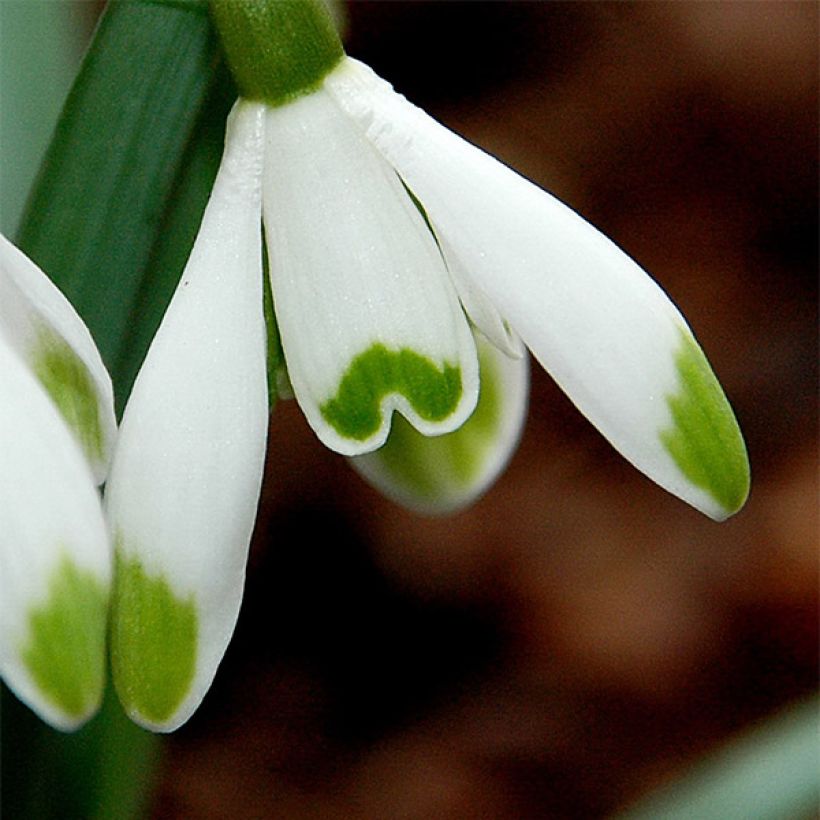

Plant habit
Flowering
Foliage
Botanical data
Galanthus
nivalis
Viridi-Apice
Amaryllidaceae
Snowdrop 'Viridapice'
Cultivar or hybrid
Planting and care
Plant the snowdrop bulbs as soon as possible, from September to November. Plant them 8cm (3in) deep, spaced 5cm (2in) apart, grouping them in batches of at least 15 or 20. After that, the cultivation requires little care. We advise you to leave the clumps in place for several years. They will naturally proliferate.
Snowdrops appreciate contrasting climates and need a period of cold to flower. They adapt to almost all soils, as long as they are moist, well-drained, and rather fertile. These plants should not lack water during the growth period. In warm regions, it is advisable to plant them in a position that benefits from the morning sun but with shade in the afternoon. They tolerate direct sunlight very well in cool regions.
Planting period
Intended location
Care
Planting & care advice
-
, onOrder confirmed
Reply from on Promesse de fleurs
Haven't found what you were looking for?
Hardiness is the lowest winter temperature a plant can endure without suffering serious damage or even dying. However, hardiness is affected by location (a sheltered area, such as a patio), protection (winter cover) and soil type (hardiness is improved by well-drained soil).

Photo Sharing Terms & Conditions
In order to encourage gardeners to interact and share their experiences, Promesse de fleurs offers various media enabling content to be uploaded onto its Site - in particular via the ‘Photo sharing’ module.
The User agrees to refrain from:
- Posting any content that is illegal, prejudicial, insulting, racist, inciteful to hatred, revisionist, contrary to public decency, that infringes on privacy or on the privacy rights of third parties, in particular the publicity rights of persons and goods, intellectual property rights, or the right to privacy.
- Submitting content on behalf of a third party;
- Impersonate the identity of a third party and/or publish any personal information about a third party;
In general, the User undertakes to refrain from any unethical behaviour.
All Content (in particular text, comments, files, images, photos, videos, creative works, etc.), which may be subject to property or intellectual property rights, image or other private rights, shall remain the property of the User, subject to the limited rights granted by the terms of the licence granted by Promesse de fleurs as stated below. Users are at liberty to publish or not to publish such Content on the Site, notably via the ‘Photo Sharing’ facility, and accept that this Content shall be made public and freely accessible, notably on the Internet.
Users further acknowledge, undertake to have ,and guarantee that they hold all necessary rights and permissions to publish such material on the Site, in particular with regard to the legislation in force pertaining to any privacy, property, intellectual property, image, or contractual rights, or rights of any other nature. By publishing such Content on the Site, Users acknowledge accepting full liability as publishers of the Content within the meaning of the law, and grant Promesse de fleurs, free of charge, an inclusive, worldwide licence for the said Content for the entire duration of its publication, including all reproduction, representation, up/downloading, displaying, performing, transmission, and storage rights.
Users also grant permission for their name to be linked to the Content and accept that this link may not always be made available.
By engaging in posting material, Users consent to their Content becoming automatically accessible on the Internet, in particular on other sites and/or blogs and/or web pages of the Promesse de fleurs site, including in particular social pages and the Promesse de fleurs catalogue.
Users may secure the removal of entrusted content free of charge by issuing a simple request via our contact form.
The flowering period indicated on our website applies to countries and regions located in USDA zone 8 (France, the United Kingdom, Ireland, the Netherlands, etc.)
It will vary according to where you live:
- In zones 9 to 10 (Italy, Spain, Greece, etc.), flowering will occur about 2 to 4 weeks earlier.
- In zones 6 to 7 (Germany, Poland, Slovenia, and lower mountainous regions), flowering will be delayed by 2 to 3 weeks.
- In zone 5 (Central Europe, Scandinavia), blooming will be delayed by 3 to 5 weeks.
In temperate climates, pruning of spring-flowering shrubs (forsythia, spireas, etc.) should be done just after flowering.
Pruning of summer-flowering shrubs (Indian Lilac, Perovskia, etc.) can be done in winter or spring.
In cold regions as well as with frost-sensitive plants, avoid pruning too early when severe frosts may still occur.
The planting period indicated on our website applies to countries and regions located in USDA zone 8 (France, United Kingdom, Ireland, Netherlands).
It will vary according to where you live:
- In Mediterranean zones (Marseille, Madrid, Milan, etc.), autumn and winter are the best planting periods.
- In continental zones (Strasbourg, Munich, Vienna, etc.), delay planting by 2 to 3 weeks in spring and bring it forward by 2 to 4 weeks in autumn.
- In mountainous regions (the Alps, Pyrenees, Carpathians, etc.), it is best to plant in late spring (May-June) or late summer (August-September).
The harvesting period indicated on our website applies to countries and regions in USDA zone 8 (France, England, Ireland, the Netherlands).
In colder areas (Scandinavia, Poland, Austria...) fruit and vegetable harvests are likely to be delayed by 3-4 weeks.
In warmer areas (Italy, Spain, Greece, etc.), harvesting will probably take place earlier, depending on weather conditions.
The sowing periods indicated on our website apply to countries and regions within USDA Zone 8 (France, UK, Ireland, Netherlands).
In colder areas (Scandinavia, Poland, Austria...), delay any outdoor sowing by 3-4 weeks, or sow under glass.
In warmer climes (Italy, Spain, Greece, etc.), bring outdoor sowing forward by a few weeks.






























